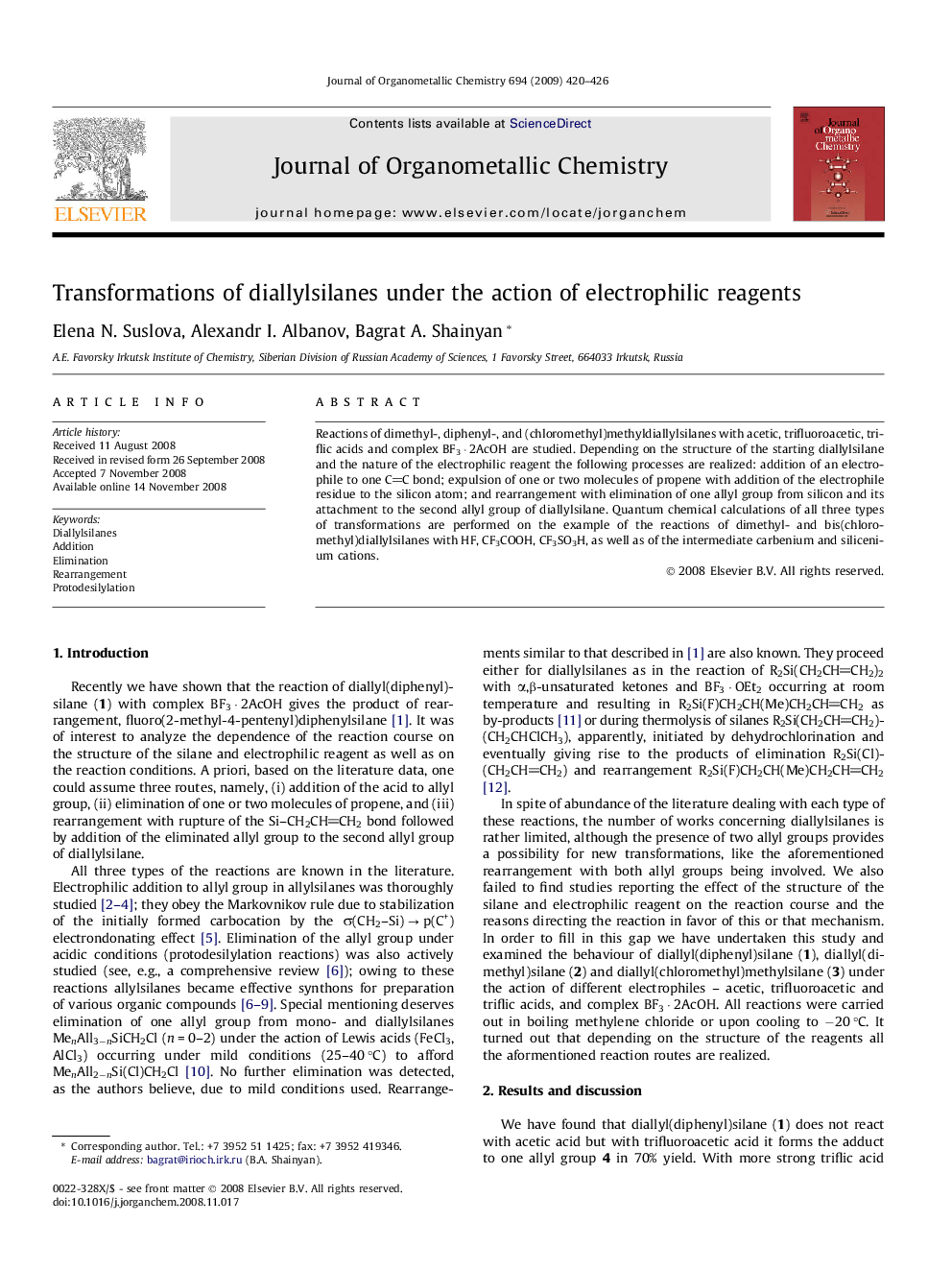| Article ID | Journal | Published Year | Pages | File Type |
|---|---|---|---|---|
| 1327757 | Journal of Organometallic Chemistry | 2009 | 7 Pages |
Reactions of dimethyl-, diphenyl-, and (chloromethyl)methyldiallylsilanes with acetic, trifluoroacetic, triflic acids and complex BF3 · 2AcОH are studied. Depending on the structure of the starting diallylsilane and the nature of the electrophilic reagent the following processes are realized: addition of an electrophile to one СС bond; expulsion of one or two molecules of propene with addition of the electrophile residue to the silicon atom; and rearrangement with elimination of one allyl group from silicon and its attachment to the second allyl group of diallylsilane. Quantum chemical calculations of all three types of transformations are performed on the example of the reactions of dimethyl- and bis(chloromethyl)diallylsilanes with HF, CF3COOH, CF3SO3H, as well as of the intermediate carbenium and silicenium cations.
Graphical abstractReactions of dimethyl-, diphenyl-, and (chloromethyl)methyldiallylsilanes with acetic, trifluoroacetic, triflic acids and complex BF3 · 2AcОH are studied. Depending on the structure of the starting diallylsilane and the nature of the electrophilic reagent the following processes are realized: addition of an electrophile to one СС bond; expulsion of one or two molecules of propene with addition of the electrophile residue to the silicon atom; and rearrangement with elimination of one allyl group from silicon and its attachment to the second allyl group of diallylsilane. Quantum chemical calculations of all three types of transformations are performed on the example of the reactions of dimethyl- and bis(chloromethyl)diallylsilanes with HF, CF3COOH, CF3SO3H, as well as of the intermediate carbenium and silylenium cations.Figure optionsDownload full-size imageDownload as PowerPoint slide
